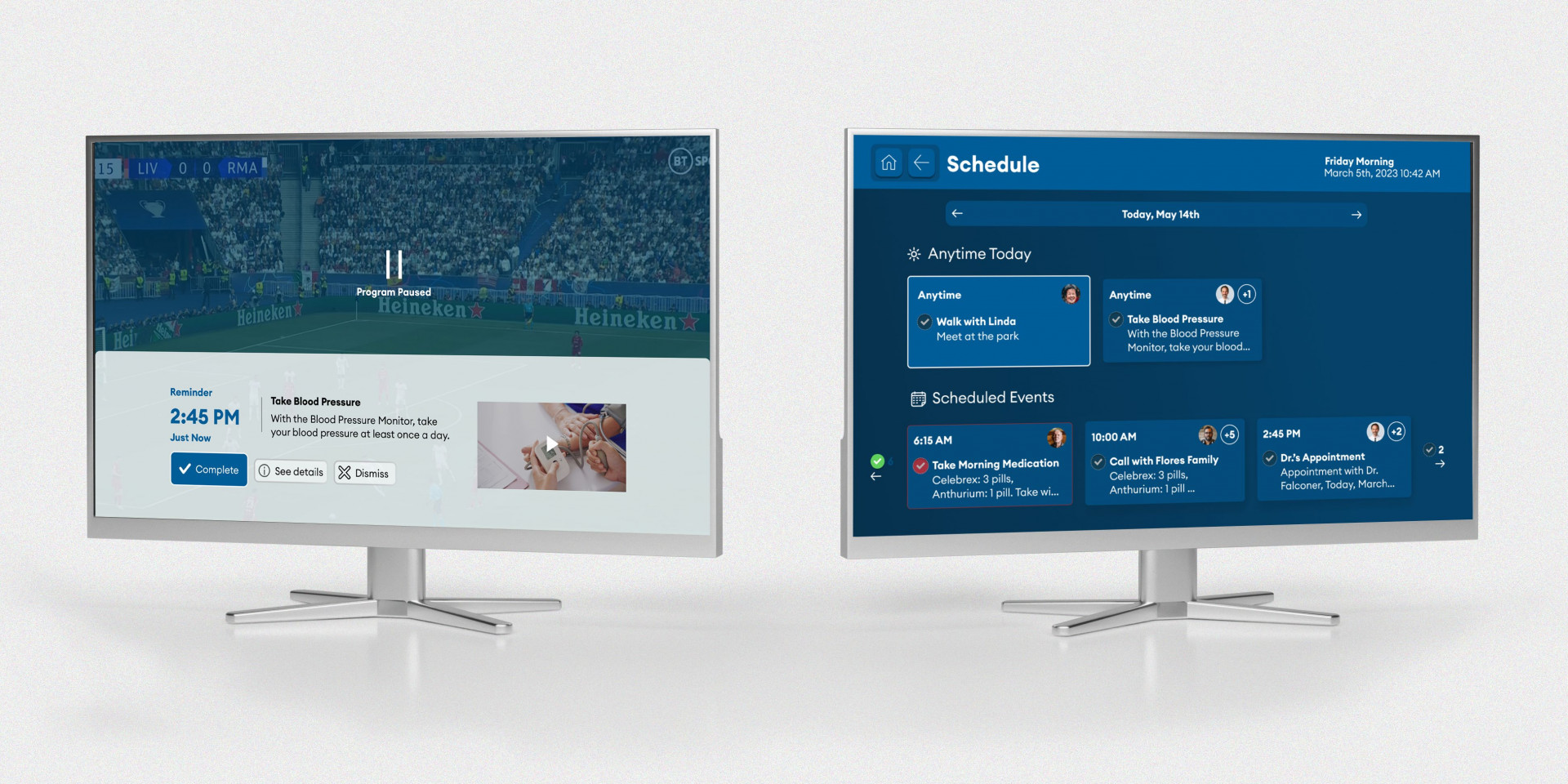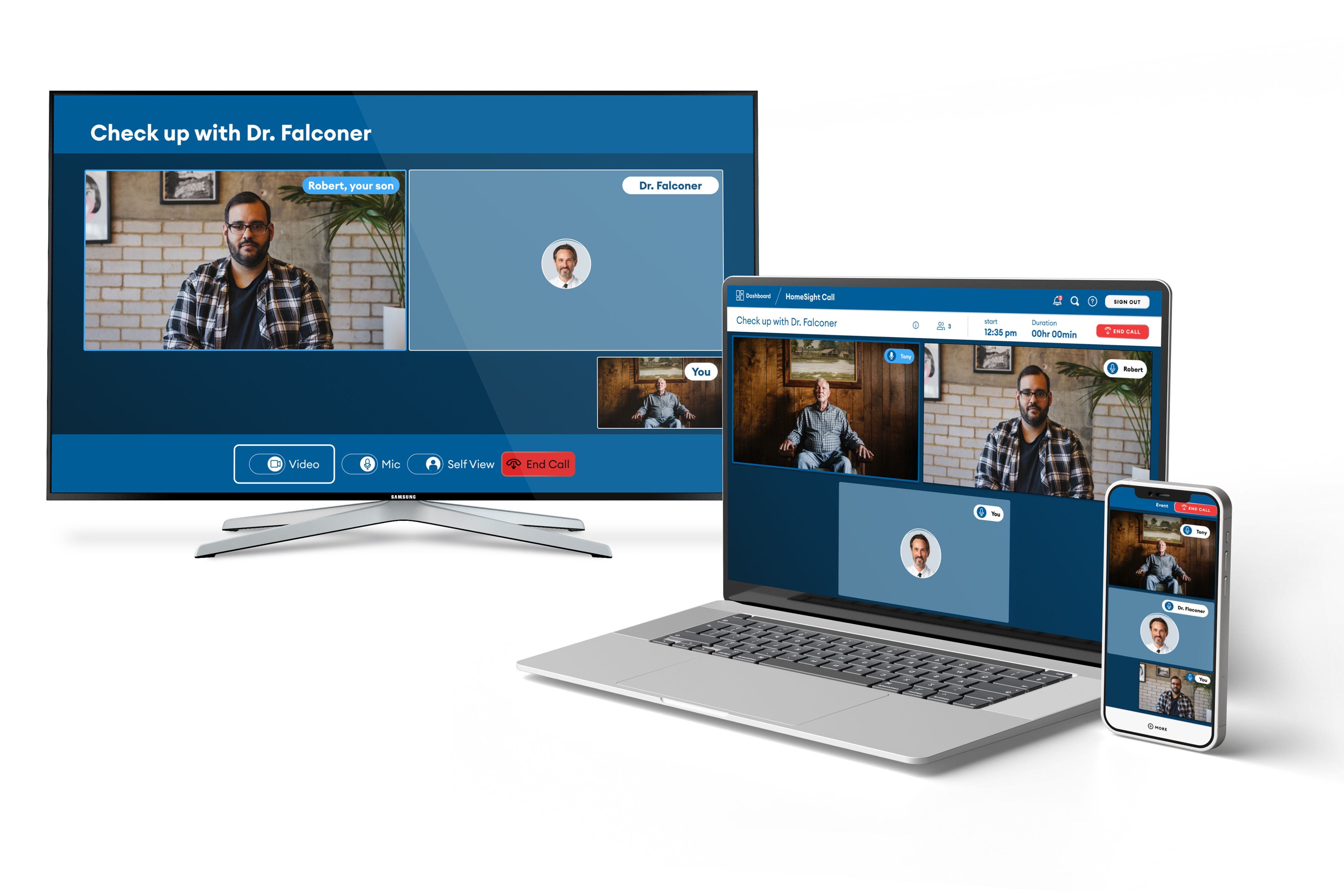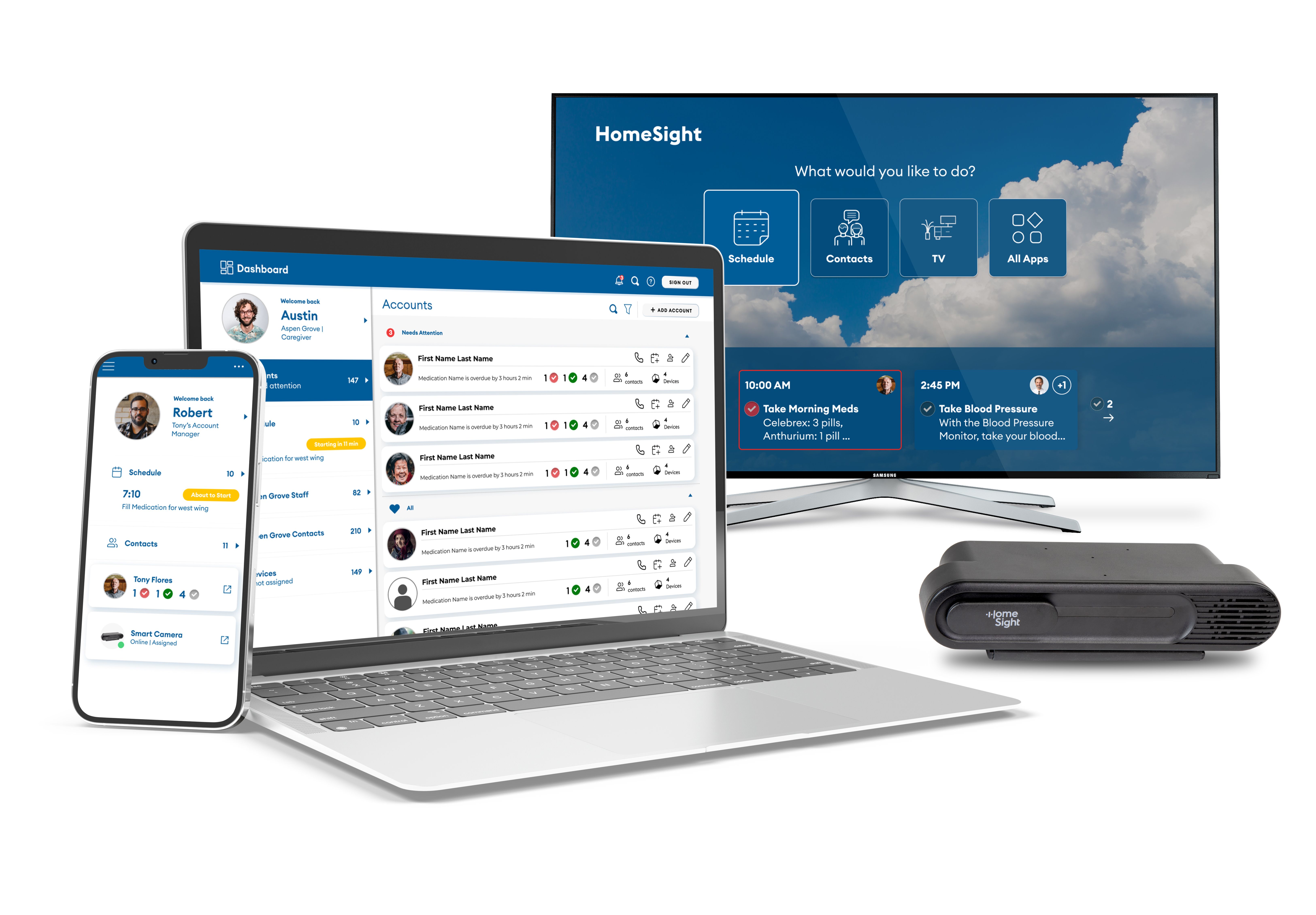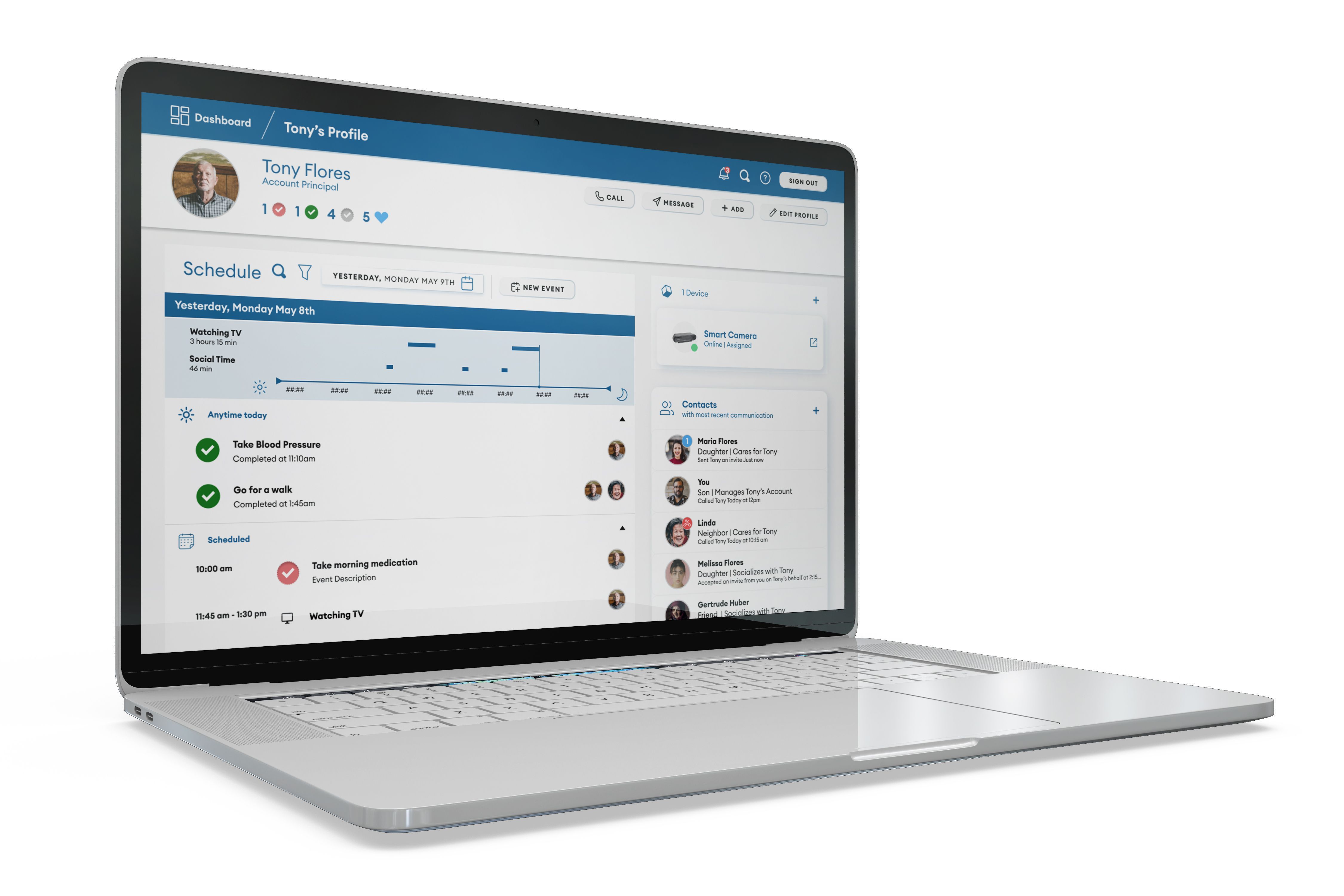
Designers
Ashley Nicodemus, Ariana van Scherrenburg, Frederico Dias, Cygny Malvar
Year
2024
Category
Concept
Country
United States
Design Studio / Department
UEGroup

Three questions for the project team
What was the particular challenge of the project from a UX point of view?
Designing for people with advanced chronic conditions requires simplicity and ergonomics, but also a rich enough feature set that patients find it valuable and not insulting to their capability level. Through testing, we discovered the best approach was to make the patient interface convenience-focused (scheduling and video calling). All health-related features are in the background, only surfacing when needed. The interface for caregivers and loved ones promotes collaboration by unifying schedules and sending automated alerts when sensors indicate a patient may need attention. This works within the portal and integrates with users' favorite calendars and messaging systems, so no one needs to change their current behaviors to stay informed.
What was your personal highlight in the development process? Was there an aha!-moment, was there a low point?
At a certain point, I found myself creating a complex management system that highlights the relationships between health and behavioral data to provide insight into a patient's well-being. The ecosystem has so much capability that it became difficult to distill how data could add insight to healthcare easily, but an internal design review with our team reminded us “no one has time for that” and the caregiver interface needed to blend into their lives without feeling like another burdensome thing to track. We simplified, guiding users to-dos and showing a quick health status. Alerts are pushed through calendar and messaging integrations when a patient is in need, so a caregiver does not need to change any of their behaviors to stay informed.
Where do you see yourself and the project in the next five years?
HomeSight is currently in MVP phases, so it is paired down to video communication, scheduling, and simple AI behavior detection. In five years, HomeSight will have reached the full potential of its hardware and sensor ecosystem. It will have more sophisticated AI to track more behaviors through sound recognition and video analysis. More medical devices will integrate with HomeSight to make the correlation between changes in behaviors and health readings richer, and HomeSight’s assistive technology will make connected technology more accessible. The platform will expand its reach beyond the initial focus of the elderly in care facilities and private homes and will be used for more diverse health, monitoring, and accessibility needs.


